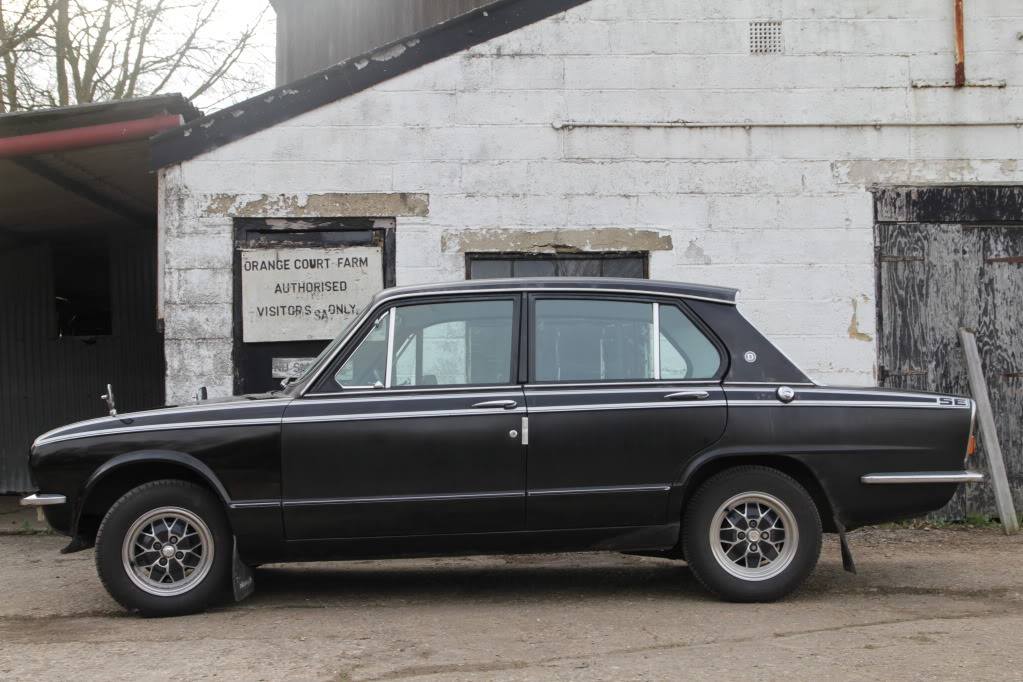Well, we have finally come to the most exciting car I have had the pleasure of owning in my name, which was a 1980 Triumph Dolomite SE. I bought it in 2005, and only had it for a couple of months, but those months left a deep impression on me.
Originally launched as the front wheel drive Triumph 1300 in 1965, what eventually became the Triumph Dolomite had something of an interesting history. In 1970, with Triumph having been absorbed into British Leyland (there is a name that speaks apprehension into the hearts of many petroheads) as one of their sporting marques, plans were afoot to 'update' the car for the new decade. Besides the obvious work to elongate the car a little by changing the front and back, which was a bit of a facelift, something extraordinary happened: the car was switched from front wheel drive back to rear wheel drive, which seems like an extraordinarily retrograde step now.
In 1972, the newly modified Triumph Dolomite emerged (at that time without the specific 1850 HL moniker that it would later adopt), with rear wheel drive, a plush interior and a 1.85 litre engine co-developed with Saab of all people... Despite the styling, which dated back seven years at the time, the car was quite successful, and was legitimately seen as a rival to the BMW 2002, the ancestor of today's 3-series.
In 1973, things got even more exciting. The Triumph 1500, the bigger engined front-wheel drive replacement for the 1300 was re-engineered to be rear-wheel drive (as the Dolomite was) and was now known as the 1500 TC, although this was not the real news of the year. The really big development was the Triumph Dolomite Sprint.
This had an all new 2 litre 16 valve engine, based on the 1.85 litre motor in the standard Dolomite, alloy wheels, around 127 bhp and it could do 0-60 mph in around 8.7 seconds. For the early 1970s, alloy wheels and a 16 valve engine were cutting edge technology, and the acceleration was very rapid indeed. The car looked amazing, and in the first series of 'The Professionals' (1977-78) Lewis Collins' character Bodie drove a white Dolomite Sprint. This was a perfect match of character and car.
My parents actually had a very similar car in the 1970s, as the 1300 had not just been replaced by the slightly larger 1500, but also the cheaper Toledo, which kept the 1300's shorter body. This was a Dolomite with the 1300 engine, but no luxuries at all, and rear wheel drive. My parents' Toledo, despite being a couple of years old, suffered from terrible reliability problems, and did not remain in the family long...
With such massive confusion among the range and terrible product planning, in 1976, all models were renamed as Dolomites, all with rear wheel drive, and all with the longer bodyshell. This meant engines from 1.3 all the way up to 2.0 litres and big variations in specification, but less complication.
A special 'run out' model came in around 1979, which was the Dolomite SE. All 1850 HL and Sprint models had standard quad round headlights, where the lesser models had twin rectangular headlamps. Being based on the 1500 HL, the SE had the twin lights, but many owners upgraded them to Sprint specification of quad headlamps and alloy wheels (not the standard steel ones). All cars were black with a grey velour interior and wooden door caps.
Mine had been upgraded in this way
, and had also been fitted with a wood rimmed steering wheel, whereas the originals had a black plastic rimmed one. The deep pile carpet, AM radio and beautiful styling were wonderful. The reliability was not.
When she arrived on a trailer from Scotland (yes, really), the brakes did not work properly, neither did the headlights and the choke lever would not stay out. I did manage to replace the battery on my own, and the problem with the brake hose was easily fixed by the nice man from the RAC, but as she took ages to warm up when she started, ran a bit rich and generally consumed money faster than a holiday in Singapore, she had to go. The final straw was finding the dodgy handling was due to incorrectly fitted ball joints.
I sold her to a chap on Ebay for £900, who drove her back to Derby, where amazingly she did not break down. I was very sad when she left, but being 23 and still living at home, I knew I had to wait until later in life to have my proper classic car fun.










